Mizukami (landscape at the end of last year) in Tsukiji Market.
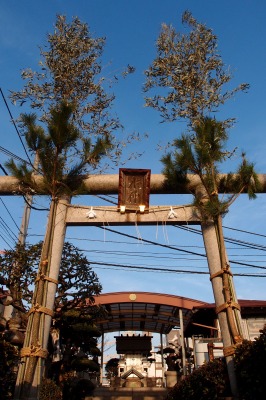
Here in Tsukiji Market, there is a place where torii and small shrine are located. By visiting here, you will be able to worship the "Mizu Shrine" main hall in the precincts of Kanda Myojin, far north.
"Mizu Shrine" is a god who has walked along with the history of the fish shore (fish market), and its beginning dates back to the beginning of Edo.
shrine hall was established in Kanda Myojin, where the Magoemon Mori clan, a fisherman who was brought from Osaka to Edo by Ieyasu Tokugawa and laid the foundation of the Nihonbashi fish shore, worshiped "Mizuhano no Mikoto".
After the Great Kanto Earthquake, the fish shore moved from Nihonbashi to the current location of Tsukiji Market in 1935, and at that time this place was the place of worship.
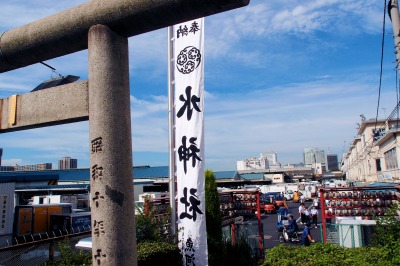
For the next 80 years, Mizu Shrine has been watching people working on the fish shore.
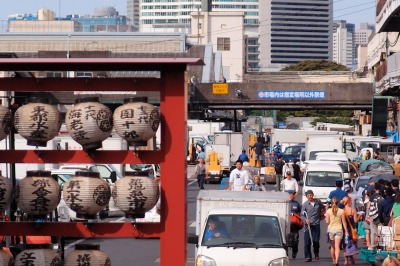
The Tsukiji area is a busy place, but this place of worship is a relatively calm place. It is always beautiful and seasonal flowers bloom, soothing your heart.
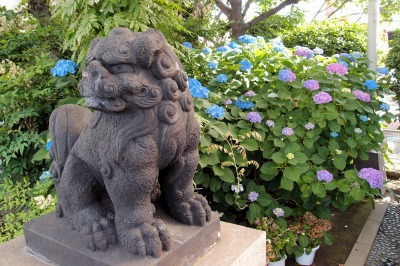
hydrangea is very beautiful now.
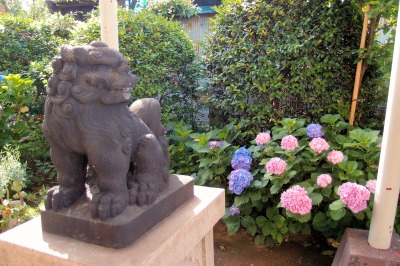
However, next year, the fish shore will be relocated to Toyosu New Market. In other words, it is very natural that this place of worship will also be relocated along with the fish shore.
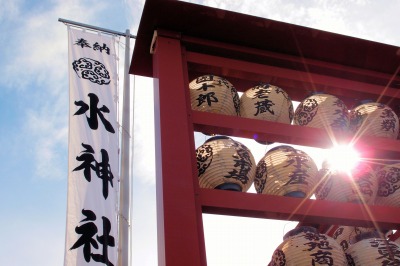
The stone monument engraved with "Hagiyama" on the same site describes the origin of the fact that Tsukiji was once the land of the Japan Navy, so it will remain here in Tsukiji. ...
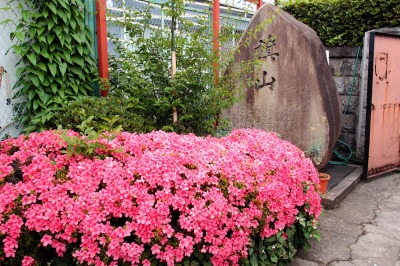
However, the "outside" of the fish market remains here in Tsukiji. Outside the back of the place of worship, the construction of the Tsuijishin Market, a facility that is scheduled to open before the market relocation, is being carried out, and the new history of Tsukiji is about to begin again.
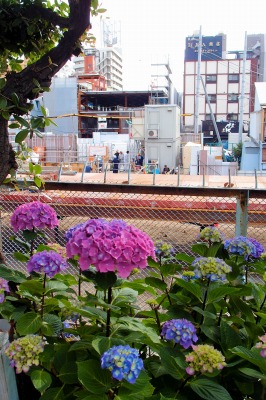
As a story of such a water shrine, what is just attracting attention now is the Tsukiji Lion Festival of "Namishi Shrine" outside the venue. At this festival, a large portable shrine of Mizu Shrine is carried.
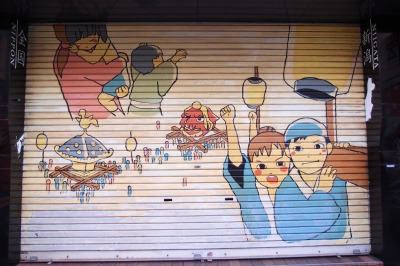
Originally there was a festival at Mizu Shrine, but it seems that there were only a few times that the portable shrine of Mizu Shrine was carried on a large scale only after the fish shore moved to Tsukiji, and it was the first time in 25 years to imperial procession around Tsukijimachi except for the market festival.
It is rare for the portable shrine to take charge of the water shrine, and the so-called collaboration of imperial procession with the large portable shrine. The main festival of the Tsukiji Lion Festival, which is carried by the large mikoshi of Namiki Shrine, is held once every three years, so this collaboration is said to be "first and last" or "historical moment".
In the future, it will be difficult for the portable shrine of Mizu Shrine to be carried out in Tsukiji-cho, and this time I think it has the character of Mizu Shrine's "Sayonara Tsukiji imperial procession".
"Tsukiji Lion Festival" of "Namishi Shrine".
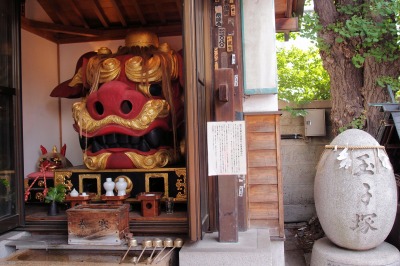
The mikoshi travels around the town during the imperial procession Festival on Saturday, June 13th.
http://www.namiyoke.or.jp/shishimaturitokusetsu.html
I hope you will see it with your eyes.

